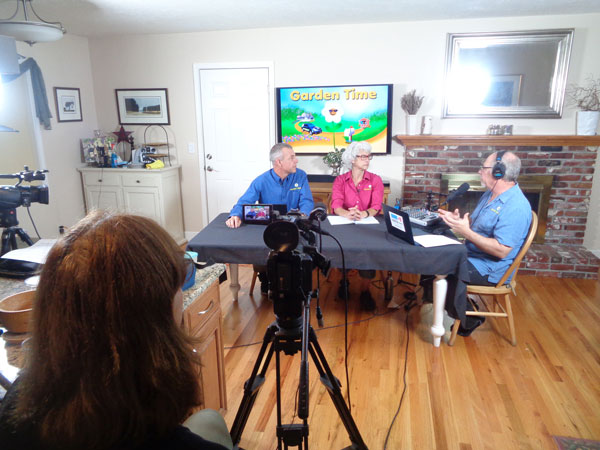|
Season 1 • Episode 3 - August 7, 2022

For our podcast this week we are
talking about the birds and the bees. Actually, we are
talking about pollinators. Of course the first question
is ‘What is a pollinator?’ It could be a lot of
different insects and animals. The ones that people
think about are bees, butterflies and birds, but there
are also ants, moths, slugs, bats and even wasps. The
variety of pollinators are incredible and not limited to
daytime. There are blooms during the day and at night.
Of course we talked about the Xerces Society and their
definition of a pollinator.
http://www.xerces.org/pollinator-conservation/about-pollinators
( by the way, a bee is not a bug!) Oregon State
Extension also has some great links to lists of
pollinators.
https://extension.oregonstate.edu/gardening/pollinators
How does a pollinator work? Many pollinators use sight
and smell to find the flowers and nectar that they
crave. Some even use UV light sensitivity like polarized
light and UV, to find their flowers, even at night.
Most people are familiar with the European Honey Bee.
The Oregon Bee Project -
https://www.oregonbeeproject.org/ has resources for
bee keepers, growers, pesticide applicators, foresters
and gardeners. They also have a list of the top native
pollinators in Oregon that can be found on the Educator
page of the website.
Why should we care? According to the Xerces Society ‘The
ecological service they provide is necessary for the
reproduction of over 85% of the world’s flowering
plants, including more than two-thirds of the world’s
crop species. The United States alone grows more than
100 crops that either need or benefit from pollinators,
and the economic value of these native pollinators is
estimated at $3 billion per year in the U.S. Beyond
agriculture, pollinators are keystone species in most
terrestrial ecosystems. Fruits and seeds derived from
insect pollination are a major part of the diet of
approximately 25% of all birds, and of mammals ranging
from red-backed voles to grizzly bears.’ –
http://www.xerces.org/pollinator-conservation/whats-at-stake.
If you don’t have pollinators, you would see the yields
from fruits and flowers diminish greatly. The food chain
would be severely affected and other species would have
problems surviving.
What about the native pollinator vs. introduced
pollinator (native bugs vs. European bees and introduced
species). The honey bee is the workhorse for many
farmers, but there were native pollinators that were
here before the bees were imported. The Xerces Society
has a lot of great information about native species on
their website,
http://www.xerces.org/.
Of course the next question is ‘How can we help’? Here
is a link to a site with 4 ways to start,
http://www.xerces.org/bring-back-the-pollinators.
You can even sign a pledge and join a Pollinator
Conservation Program -
http://www.xerces.org/pollinator-conservation.
You can also use plants to attract and help pollinators.
Here’s a short plant list from OSU
https://extension.oregonstate.edu/sites/default/files/documents/12281/pollinatorplants.pdf
We even talked about Stoller Family Estate planting
their pollinator garden to help with diversity in their
vineyard. That included the nature-scaping in their
meadow and around the signature Oak tree. You could even
start with the planting of a milkweed plant for the
monarch butterfly, though we recommended to plant
milkweed species that are native to your area. We also
recommend a planting of Native plants, along with
cultivars and nativars, and don’t forget trees! Use a
staggered plantings to provide for pollinators through
the whole season.
There are 2 charts that we talked about. The perennial
plant list we have on our website,
http://gardentime.tv/charts/perennial.htm, which is
pretty specific to the Pacific Northwest, and Ryan’s
list of pollinator plants
(click here).
A few other tips include using less chemicals. When you
do, apply them at the right time and read the label.
Remember that organic chemicals can be as damaging as
synthetics if used incorrectly and at the wrong time.
You can also provide nesting sites for native
pollinators, mason bee houses are a great example, and
even not cleaning your garden too much to allow for
ground based bees and pollinators.
An effective design is a great place to start. You can
begin with a simple potted plant or container, or get
some great design tips here! Designing a pollinator
friendly garden -
https://extension.oregonstate.edu/video/buzzing-beautiful-designing-pollinator-gardens-osu-extension

PODCASTS
2022
• Return to Current Year Podcast List
 |